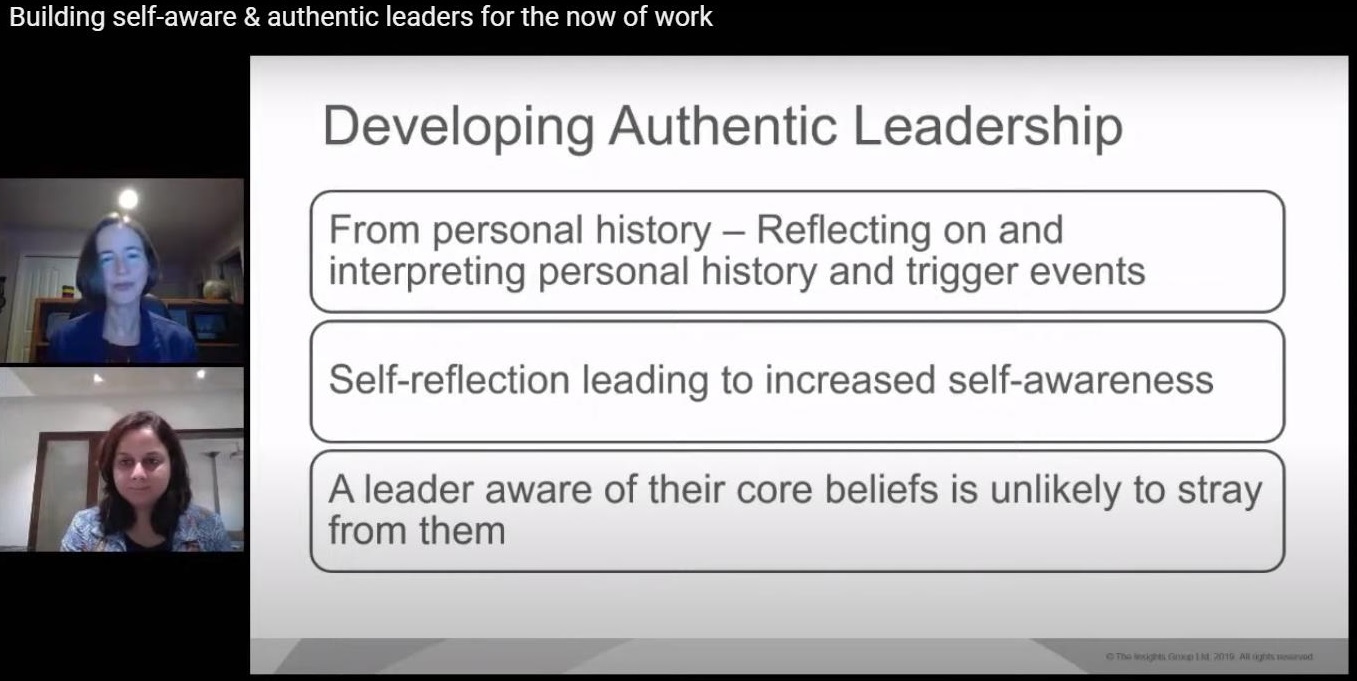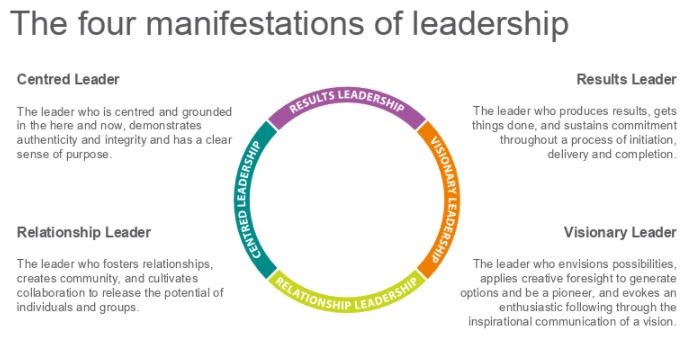A guide to becoming authentic leaders

Discover&Lead Read similar articles

Your personality and the culture of your organization influences your own personal leadership style. Learn how you can become an authentic leader using the four manifestations model by Insights and lead your organization towards achieving long-term goals with more integrity.
You can access the full session here:
The idea of authentic leadership has been around for a long time. However, amid the current global health crisis, it has become more important than ever before.
There is a need for leaders to be their most authentic selves, be more self-aware, have truthful self-concepts, and create an ecosystem built on the foundation of honesty and transparency.
But there are many misconceptions about authentic leadership. In fact, while it has been around for some time, it is still a concept that's fairly new in leadership research.
In a recent webcast hosted by People Matters and Insights, Tanya Boyd, Practitioner Education Manager, Insights and Ketaki Kadekar, Enterprise Client Manager, Insights demystified authentic leadership and shared how it can be built.
Sharing some insights from research, Tanya said, "The integrity of authentic leaders helps to sustain organizational results through good times and bad."
In the last six months, we might have been focused on just trying to continue or keep our organizations going, but we might not have had to be authentic during that short period of time just to survive. But as we shift into having more of a longer-term focus, authenticity becomes more important. We need that authentic leadership in order to sustain and drive long-term results for our organizations.
Authentic leaders:
- Have a passion for their purpose
- Practice values consistently
- Lead with heart as well as head
- Establish long-term, meaningful relationships
- Have self-discipline to get results
But the most important question is: How can you become an authentic leader?
Tanya said, "In leadership research, there is no definitive best leadership profile. There's room for all different approaches. The journey begins from self-awareness."
The good news is: Authentic leaders are not just born, they are made
Authentic leaders spend a great deal of time in self-reflection. We cannot be successful simply by trying to be like someone else. Tanya suggested, "You have to identify, what's your style?"
She shared from her experience, "If you've talked to people who others would consider authentic leaders to try to find out how did they become an authentic leader, it really seems to be from a series of experiences over a person's lifetime, up to the point where they're having this conversation."
Authentic leadership really develops through the experiences a leader has, that they then take time to reflect on and learn from.
So often these events that leaders mentioned, they may call them trigger events. These are events where they've had to have to do something different.
The interesting thing is that it's hard to create these trigger events or orchestrate them. However, the pandemic has been a trigger event for all. This is the right time when leaders can invest their time in self-reflection.
The new reality of work presents an opportunity for leaders to work on themselves towards becoming their more and more authentic selves. Tanya shared a leadership model by Insights which may come in handy for leaders:

The four manifestations for authentic leadership
First, it starts with something called centered leadership. The leader who is centred and grounded in the here and now, demonstrates authenticity and integrity and has a clear sense of purpose.
It is aligned with the components of passion for their purpose and practicing values consistently from the previous definition of authentic leadership.
The next one is called visionary leadership. So a visionary leader is one who is envisioning possibilities, applying creative foresight to generate options and being a pioneer. A visionary leader is evoking enthusiastic following through an inspirational communication of a vision. In the leadership model both of these traits are on the opposite sides, they're both important and they are different.
 Visionary leadership aligns most with the authentic leadership component of leading with the heart as well as the head.
Visionary leadership aligns most with the authentic leadership component of leading with the heart as well as the head.
Then the third one is relationship leadership. Relationship leadership is a lot about the leader who fosters relationships, creating community, and cultivating collaboration, to unlock the potential of individuals and groups. It aligns with that component of establishing long term meaningful relationships and being able to show compassion to people around you.
The fourth one is results leadership. The results leader is one who produces results, gets things done and sustains commitment through a process of initiation, delivery, and completion.
Tanya said, “These four manifestations of leadership are intentionally placed in a circular model, because we believe that all four are needed to be truly effective as a leader. And the interesting thing is that, as I was going through those, you might have had a natural connection or resonance with some of them, and maybe not as much with others.”
It could be based on your personality or the organization you work in.
Check for yourself: You can do a simple exercise based on the four manifestations model that helps you self assess where you are currently spending your time as a leader, or you can use this with leaders you support in your organizations. THINK: How would you like to be spending your time? Where do you think you should be spending your time in order to help your organization right now? And then once you've done that, you can think about what would it take to make a shift for yourself? What might be in your way, what might be stopping you is that is there something in your environment that is getting in the way? Is there something within yourself that might be stopping you from stretching into one of those areas or dialing up or dialing down those energies?
The four manifestations give a holistic way to assess our leadership. But it is also important to note that our personality impacts how we show up as a leader and also how we might approach those manifestations. Tanya said, “So the better aware we are of our personality preferences and how they're showing up in leadership, the more authentic we can really be in our leadership approach.”
Being aware of your personality preferences
No matter what your personality is, you have the opportunity to be and become an effective leader. A personality tool or personality assessment can help leaders really embrace their own style. For instance, Insights has a personality inventory evaluator that considers four color energies of leadership.
- Cool Blue: Is thoughtful and takes a considered approach. Is precise in stating what has to be done.
- Earth Green: Is helpful and supportive. Empowers others.
- Sunshine Yellow: Acts as a catalyst for growth. Shifts from present day to future possibilities.
- Fiery Red: Demonstrates a sense of urgency. Clearly states what has to be done, by whom and by when.
We all have all of these energies. One of these energies is a natural home for us but that doesn’t mean we can’t dial up any of the other energies as the situation demands.
The trick lies in being self-aware, in knowing which of these energies come more naturally to you and where you need to make a deliberate effort.
As Ketaki shared a wonderful example, of Ratan Tata and Tata Group, how the firm utilizes all the energies. Sunshine yellow to see problems and creating solutions, fiery red to execute the plan and vision, earth green to build a team and foster a culture that makes the entire execution process smooth and effective, and lastly cool blue, to ensure compliance and governance.
Reflect on which of these energies do you personally associate with the most? Where do you think you need to spend more time? Which energy do you need to dial up for your current business goals?







